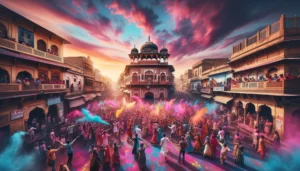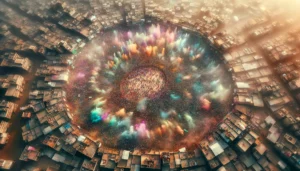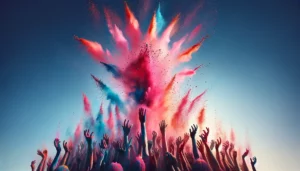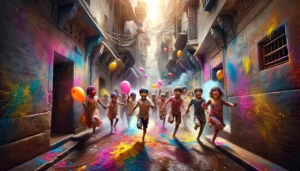In the spirit of Holi, the festival of colors, we’ve embraced the fusion of tradition and technology by creating stunning, vibrant images using AI image generators like Dall-E and Bing AI. This innovative approach allows us to capture the essence of Holi in a way that’s both imaginative and deeply respectful of the festival’s rich heritage. By inputting detailed prompts that reflect the joy, community, and color of Holi, we’ve generated unique pieces of art that celebrate this auspicious occasion. Each image, with its explosion of colors and scenes of jubilation, not only pays homage to the traditional aspects of Holi but also showcases the incredible potential of AI in the realm of creative expression. Through our blog, we invite you on a visual journey that marries the ancient with the cutting-edge, offering a fresh perspective on Holi celebrations.
Currently browsing: Generative AI
Latest trends in technology, through the lens of AgilizTech
Category: Generative AI
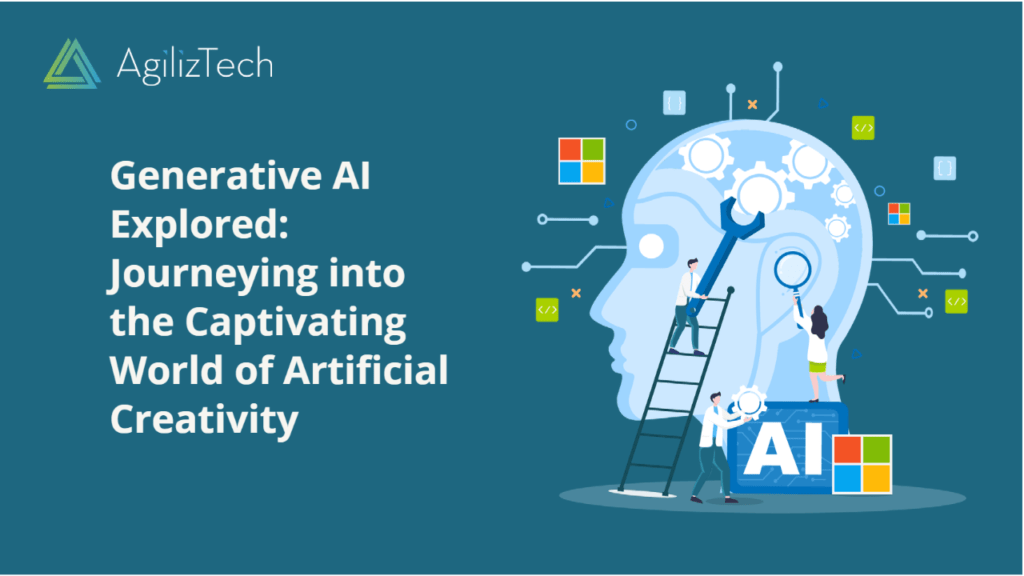
World of Generative AI & its Limitless Creativity
Welcome to the World of Generative AI
Overview
Welcome to the captivating world of Generative AI, where creativity merges with cutting-edge technology. This exhaustive blog unravels the transformative impact of Generative AI across diverse industries. From GANs revolutionizing art to GPTs advancing language models, witnessing the fusion of human and AI creativity. Delve into AI’s potential in healthcare, music, video games, and content creation. Uncover ethical considerations and captivating case studies from the industry.
For a deeper understanding, check out the topics listed below, each providing detailed insights into the boundless possibilities of Generative AI. Get ready to explore the awe-inspiring influence of AI-driven creativity!
- Generative Artificial Intelligence: A Beginner’s Guide: Discover how Generative AI creates new content with deep learning models like GANs and VAEs. Real-world examples like ChatGPT, DALL-E, and Bard showcase its transformative impact.
- Generative Pretrained Transformers: Revolutionizing AI with Advanced Language Models: Learn how GPTs unlock a new era of technology. Dive into GPT-3’s staggering language generation capabilities.
- GANs: Revolutionizing the Art World: Explore the fascinating world of Generative Adversarial Networks (GANs) and its impact on visual art, music, and literature.
- Unlocking Creativity with Generative AI: Case Studies from Industry: Dive into captivating case studies showcasing Generative AI’s impact.
- Generative AI and Healthcare: A Match Made for Diagnosis: Uncover Generative AI’s promise in healthcare, imaging, and drug development.
- Generative AI in Music: The New Composer in Town: Discover Generative AI composers redefining creativity in music.
- Generative AI in Video Games: Building Virtual Worlds: Find out Generative AI’s role in revolutionizing gaming environments.
- Generative AI in Journalism and Writing: Overview: Unveil its potential in journalism and content creation.
- Ethics of Generative AI: Examining the Potential Risks and Benefits: Navigate Generative AI’s ethical landscape, ensuring responsible use.
- Navigating the Generative AI Landscape: Tools and Resources for Beginners: Guide beginners with essential AI tools and resources.
World of Generative AI: Conclusion
Generative AI reshapes technology and creativity. Witness its potential in art, music, healthcare, and more. Stay updated on the latest advancements by bookmarking this page. Explore AI’s ever-changing world of creativity.
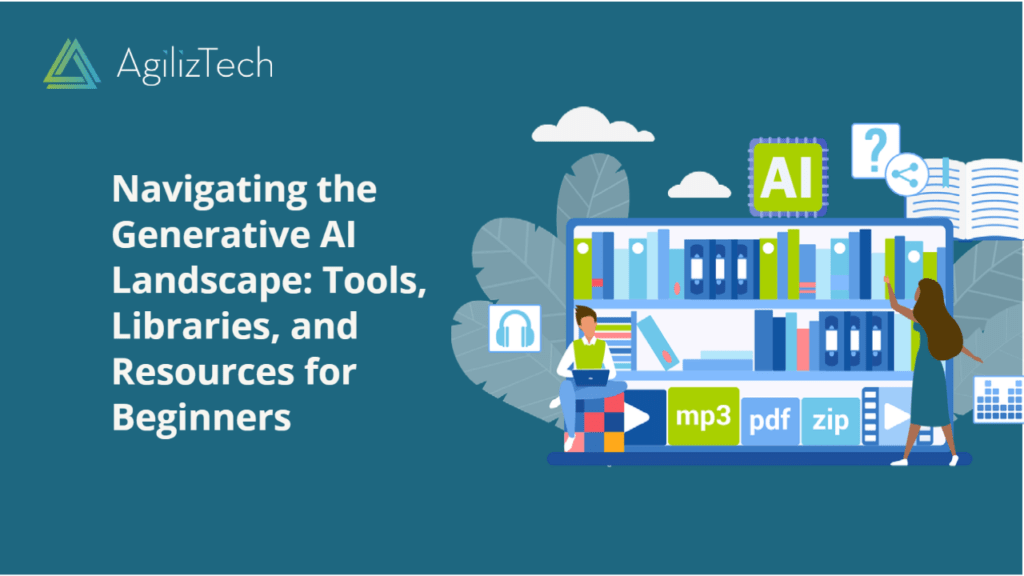
Generative AI Tools & Resources: Beginner’s Guide
Navigating the Generative AI Landscape: Tools and Resources for Beginners
Generative AI is a branch of artificial intelligence that focuses on creating new content or data from scratch. It can be used for various applications, such as image synthesis, text generation, music composition, and more. Generative AI is also one of the most exciting and rapidly evolving fields in AI research, with new models and techniques emerging every day.
But how can you get started with generative AI? What are the tools and resources that you need to learn and experiment with this fascinating domain? In this blog post, we will provide you with a list of some of the most popular and useful generative AI tools and resources for beginners. Whether you want to create your own art, music, or stories, or just explore the possibilities of generative AI, these tools and resources will help you along the way.
Generative AI Tools & Resources
Here are some of the tools and resources that we recommend for beginners who want to dive into generative AI:
TensorFlow
TensorFlow is an open-source framework for machine learning and deep learning. It offers a variety of APIs, libraries, and tools for building and deploying generative AI models. TensorFlow also supports TensorFlow Hub, a repository of pre-trained models that you can use for generative AI tasks, such as text generation, image synthesis, style transfer, and more. You can find tutorials and examples on how to use TensorFlow for generative AI on their website.
PyTorch
PyTorch is another open-source framework for machine learning and deep learning. It is known for its flexibility and ease of use, especially for research and prototyping. PyTorch also has a rich ecosystem of libraries and tools for generative AI, such as PyTorch Lightning, Torchvision, Torchtext, TorchAudio, and more. You can also access pre-trained models for generative AI from PyTorch Hub. You can learn more about PyTorch and generative AI from their documentation.
Hugging Face
Hugging Face is a company that provides state-of-the-art natural language processing (NLP) models and tools. They have developed Transformers, a library that offers hundreds of pre-trained models for various NLP tasks, including text generation, summarization, translation, sentiment analysis, and more. You can use Transformers to create your own text-based generative AI applications, or use their online playgrounds to experiment with different models and settings: https://huggingface.co/transformers/ You can also check out their blog for tutorials and tips on how to use Transformers for generative AI.
RunwayML
RunwayML is a platform that allows you to create and explore generative AI models without coding. You can choose from a wide range of models for image synthesis, style transfer, face manipulation, video generation, audio synthesis, and more. You can also mix and match different models to create your own unique generative AI projects. RunwayML is easy to use and fun to play with. You can sign up for free and start creating your own generative AI art.
Magenta
Magenta is a research project by Google that explores the role of machine learning in the creative process. It focuses on developing generative AI models and tools for music and art. Magenta offers several open-source libraries and applications that you can use to generate music, drawings, sketches, paintings, and more. You can also learn from their tutorials and blog posts on how to use Magenta for generative AI.
Conclusion
Generative AI is an exciting and rapidly evolving field that offers endless possibilities for creativity and innovation. With the tools and resources that we have listed above, you can start your journey into generative AI and discover its potential. We hope that this blog post has inspired you to try out some of the generative AI tools and resources that we have recommended. Have fun creating!
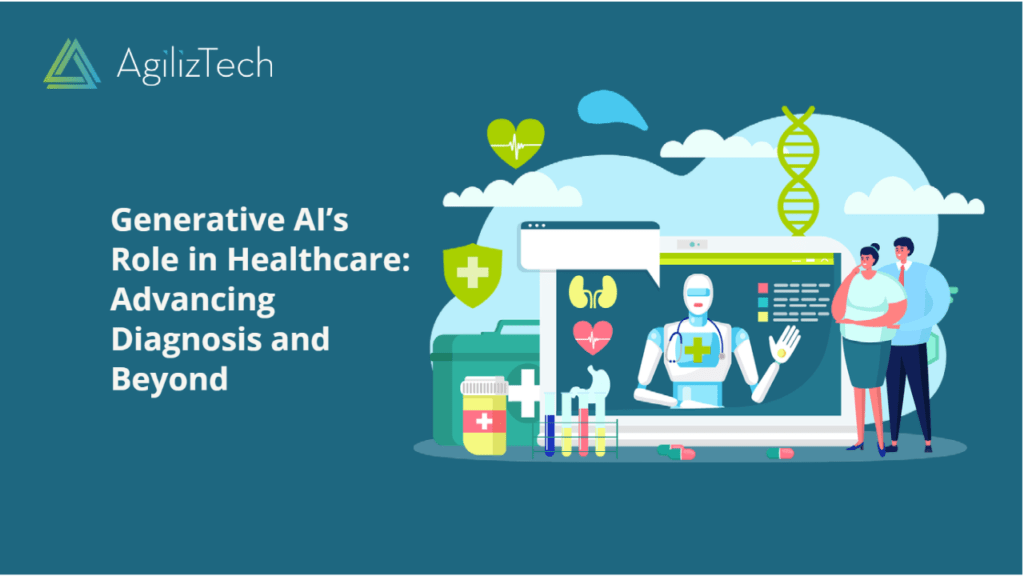
Generative AI in Healthcare: Advancing Diagnosis Efficiencies
Generative AI and Healthcare: A Match Made for Diagnosis
Introduction
In recent years, the field of Artificial Intelligence (AI) has made significant strides in transforming various industries. Moreover, one area that holds immense promise is the integration of generative AI in healthcare. By harnessing the power of generative AI, medical professionals can enhance their diagnostic capabilities, improve drug discovery processes, and even predict diseases. In this blog post, we will explore the potential of generative AI in medical imaging, drug discovery, and disease prediction.
Generative AI in Medical Imaging
Generative AI algorithms, such as generative adversarial networks (GANs), have the potential to revolutionize medical imaging. For instance, GANs can generate synthetic medical images that closely resemble real patient data, opening a range of possibilities. These include data augmentation, which can be used to augment limited datasets in areas where acquiring large and diverse datasets is challenging. Additionally, generative AI can help identify anomalies in medical images, assisting radiologists in detecting early signs of diseases or abnormalities that may be missed by the human eye alone.
Generative AI in Drug Discovery
The process of drug discovery is time-consuming, expensive, and often involves trial and error. However, generative AI techniques can significantly speed up this process and improve the chances of success. By using generative AI models, researchers can generate virtual compounds with specific properties, such as high efficacy and low toxicity. This allows for faster screening of potential drug candidates, reducing the time and cost involved in the initial stages of drug development. Furthermore, generative AI can aid in designing entirely new drugs by generating novel chemical structures that have the potential to interact with specific disease targets.
Generative AI in Disease Prediction
Early detection of diseases is crucial for effective treatment and improved patient outcomes. Generative AI can play a vital role in disease prediction by analyzing patient data and identifying patterns that may indicate the presence of certain conditions. By leveraging large datasets and generative AI models, healthcare providers can predict the likelihood of diseases like cancer, diabetes, or cardiovascular disorders. Additionally, generative AI can analyze various risk factors, including genetic, environmental, and lifestyle, to assess an individual’s susceptibility to certain diseases. This can help in implementing preventive measures and promoting healthier lifestyles.
Conclusion
In conclusion, generative AI holds immense potential to revolutionize healthcare. Healthcare professionals can enhance diagnostic accuracy, streamline drug development processes, and improve patient outcomes by harnessing its power in medical imaging, drug discovery, and disease prediction. However, it is essential to strike a balance between AI-driven automation and human expertise to ensure the highest quality of care. As the field continues to evolve, integrating generative AI in healthcare will undoubtedly bring about significant advancements, benefiting patients and medical professionals alike.
Sources:
- “Generative Adversarial Networks for Medical Imaging: A Review” – https://pubmed.ncbi.nlm.nih.gov/32433296/
- “Generative AI in Drug Discovery: A Review” – https://pubs.acs.org/doi/10.1021/acs.jmedchem.9b00959
- “Generative AI for Disease Prediction: A Review” – https://www.ncbi.nlm.nih.gov/pmc/articles/PMC7152885/
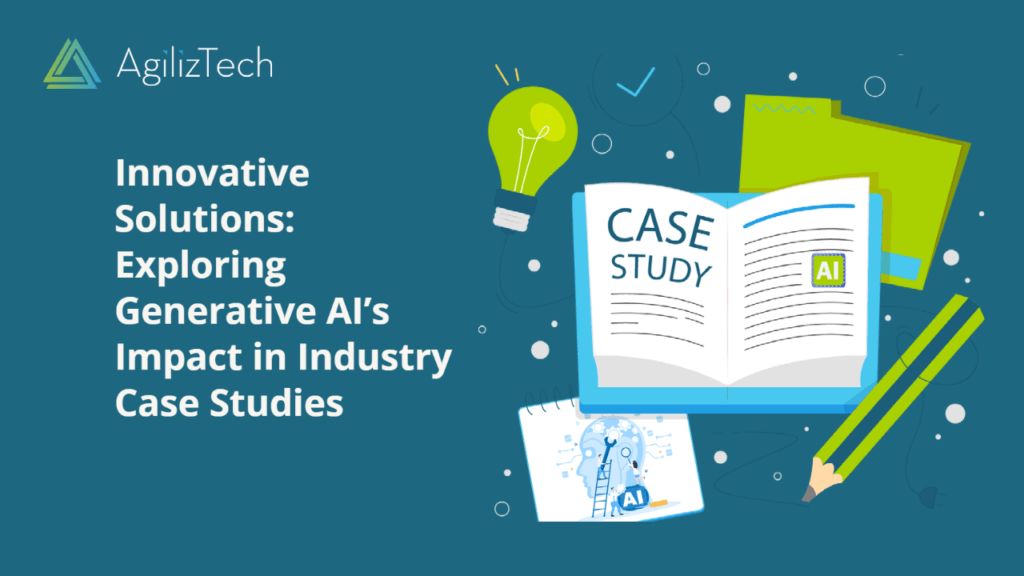
Creativity with Generative AI: Transforming Industries
Unlocking Creativity with Generative AI: Case Studies from Industry
Introduction
In today’s rapidly evolving technological landscape, Businesses seek creative ways to unlock potential. One such avenue is the utilization of Generative Artificial Intelligence (AI), a cutting-edge technology with immense potential for fostering creativity. In this blog post, we will explore captivating case studies that demonstrate how businesses are harnessing the power of Generative AI to bolster their creative endeavors. From content creation to design and beyond, Generative AI is revolutionizing the way industries approach creativity.
Content Creation
Generative AI transforms content creation, enabling businesses to personalize and automate their offerings to cater to individual preferences. For example, Netflix uses Generative AI algorithms to create personalized movie and TV show recommendations for its users. The AI system analyzes user preferences and viewing habits to generate tailored suggestions, enhancing the user experience and promoting creative content exploration.
Meanwhile, The Washington Post employs Generative AI to automate the creation of news articles on a large scale. The AI system uses data-driven algorithms to generate reports on topics such as sports scores, financial updates, and real estate listings. This automation allows journalists to focus on more in-depth and investigative reporting, pushing the boundaries of journalism and fostering creativity in news production.
Design and Visual Arts
Generative AI is revolutionizing the world of design and visual arts by streamlining workflows and pushing creative boundaries. Adobe incorporates Generative AI in its design tool, Adobe Sensei. The AI-powered tool helps designers generate multiple variations of a design concept, providing inspiration and speeding up the creative process. Designers can explore new possibilities and unleash their creative potential with the help of AI.
The Google DeepDream Project is another remarkable example of Generative AI in the creative realm. The project utilizes Generative AI to transform ordinary images into visually stunning and surreal artworks. AI trained on vast datasets, generates patterns, effects, enabling artists and photographers to explore new dimensions of creativity in image editing.
Music and Sound
Generative AI also makes waves in the music and sound industry, offering new avenues for creativity and artistic expression. Jukin Media employs Generative AI to automatically generate soundtracks for user-generated videos. The AI system creates customized background music by analyzing the video content and its emotional context, enhancing the overall viewer experience and fostering a deeper connection with the content.
OpenAI’s MuseNet is an AI system that uses Generative AI to compose original music across various genres and styles. The system assists musicians and composers in exploring new musical ideas and expanding their creative possibilities. MuseNet helps artists unlock creativity, create unique compositions.
Conclusion
Generative AI is a game-changer for unlocking creativity in various industries. From content creation to design and music, businesses harness AI algorithms’ power to foster innovative ideas and streamline creative processes. By embracing Generative AI, organizations can enhance their creative output, captivate audiences, and stay ahead in an increasingly competitive landscape. The case studies we’ve explored demonstrate the immense potential of Generative AI in unlocking creativity, paving the way for exciting possibilities in the future.
Remember, when using information from external sources, always provide proper citations to avoid plagiarism and give credit to the original authors.
Generative AI is transforming industries, and by embracing its potential, businesses can unlock new realms of creativity and drive innovation forward. Embrace the power of Generative AI and unleash your creative potential today!
(Source: Netflix, The Washington Post, Adobe, Google DeepDream Project, Jukin Media, OpenAI’s MuseNet)
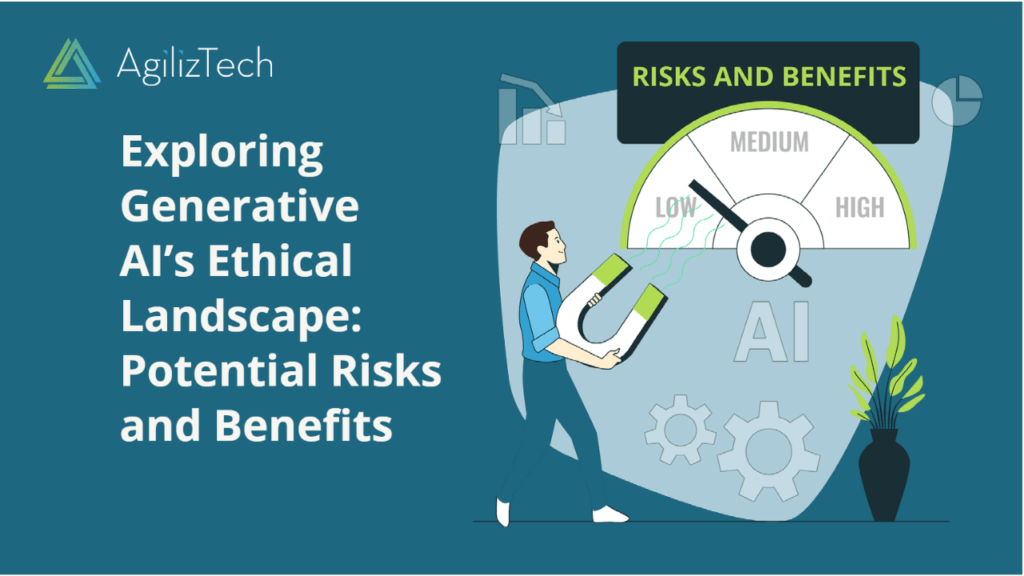
Ethics of Generative AI: Detailed Exploration
Ethics of Generative AI: Examining the Potential Risks and Benefits
Ethics of Generative AI: Overview
Generative AI is a branch of artificial intelligence that focuses on creating new content based on existing data, such as text, images, music, or code. Generative AI has many applications and benefits, such as enhancing creativity, improving productivity, and generating novel solutions. However, generative AI also poses some ethical challenges and risks, such as potential misuse, impacts on jobs, and quality and reliability issues. In this blog post, we will explore some ethical considerations when using generative AI and provide a balanced view on the potential risks and benefits.
Ethics of Generative AI: Potential Misuse
One of the main ethical concerns about generative AI is the potential for misuse and abuse. Generative AI can be used to create fake or misleading content, such as deepfakes, fake news, or spam. This can negatively affect individuals and society, such as violating privacy, spreading misinformation, or influencing opinions and behaviors. For example, deepfakes are realistic videos or images that manipulate the appearance or voice of a person, such as a celebrity or a politician. Deepfakes can be used for entertainment or satire, but they can also be used for malicious purposes, such as blackmailing, defaming, or impersonating someone.
To prevent or mitigate the potential misuse of generative AI, some possible solutions include:
- Developing ethical guidelines and standards for generative AI developers and users.
- Implementing verification and authentication mechanisms to detect and flag fake or misleading content.
- Educating and raising awareness among the public and the media about the capabilities and limitations of generative AI.
- Promoting responsible and transparent use of generative AI for positive and beneficial purposes.
Impacts on Jobs
Another ethical issue related to generative AI is its impact on jobs and employment. Generative AI can automate or augment various tasks and processes that require human creativity or intelligence, such as writing, designing, composing, or coding. This can have positive effects, such as increasing efficiency, quality, and innovation. However, this can also have adverse effects, such as displacing workers, reducing human agency, or creating skill gaps.
To address or balance the impacts of generative AI on jobs and employment, some possible solutions include:
- Creating new jobs and opportunities that leverage human skills and abilities that complement generative AI.
- Providing training and education for workers to adapt to the changing demands and requirements of the labor market.
- Ensuring fair and equitable access to generative AI tools and resources for workers and employers.
- Protecting the rights and interests of workers and employers concerning generative AI.
Quality and Reliability
A third ethical aspect of generative AI is the quality and reliability of the generated content. Generative AI can produce high-quality, realistic content that matches or surpasses human performance. However, generative AI can also produce low-quality or unrealistic content containing errors, biases, or inconsistencies. This can affect the generated content’s validity, credibility, and usefulness. For example, generative text can contain grammatical mistakes, factual inaccuracies, or logical fallacies. Generative images can contain artifacts, distortions, or anomalies.
To ensure or improve the quality and reliability of generative AI content, some possible solutions include:
- Developing evaluation and feedback mechanisms to assess and improve the performance and accuracy of generative AI models.
- Incorporating human oversight and intervention to review and edit the generated content.
- Applying ethical principles and values to guide the design and development of generative AI models.
- Acknowledging the limitations and uncertainties of generative AI content.
Ethics of Generative AI: Conclusion
Generative AI is a powerful and promising technology that can create new content based on existing data. Generative AI has many benefits and applications for individuals and society. However, generative AI also raises some ethical questions and challenges that need to be addressed. By considering the potential risks and benefits of generative AI from a balanced perspective, we can use generative AI responsibly and ethically.
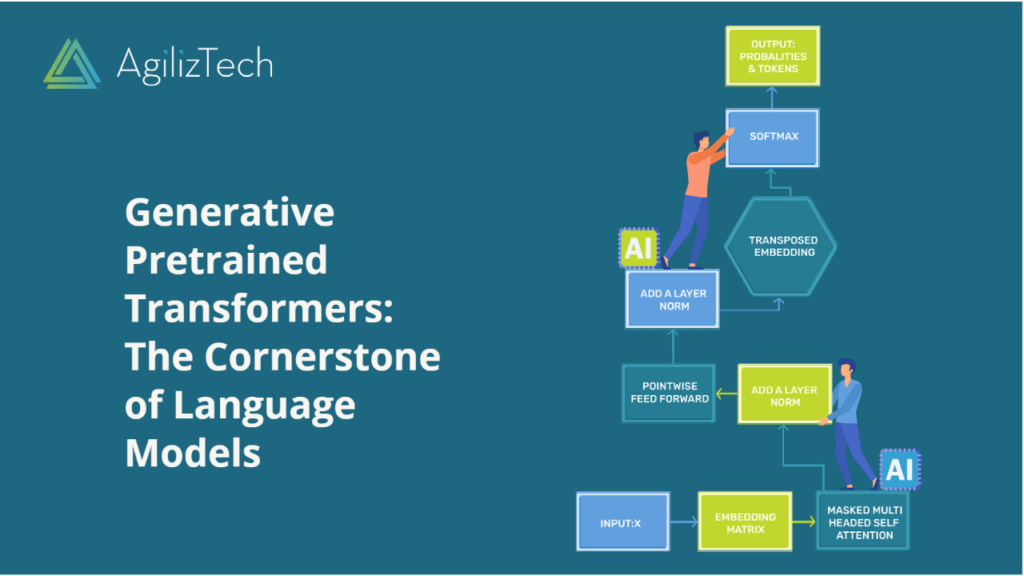
Generative Pretrained Transformers: AI Language Pioneer
Generative Pretrained Transformers: Revolutionizing AI with Advanced Language Models
Introduction
Generative Pretrained Transformers (GPTs) have become the cornerstone of language models, ushering in a new era of AI technology. In this blog post, we will delve into the inner workings of models like GPT-3, exploring how they function and the profound impact they have had on the field of AI. These advanced language models have not only revolutionized language generation but have also opened up exciting possibilities for creativity in Generative AI.
Understanding Generative Pretrained Transformers
Generative Pretrained Transformers, or GPTs, are deep learning models that undergo extensive pretraining on vast amounts of text data. By utilizing Transformers, a powerful neural network architecture, GPTs excel in capturing long-range dependencies in sequential data. During training, these models learn to predict the next word in a sentence based on the preceding context, enabling them to grasp the statistical patterns and structures of human language.
The Power of GPT-3
GPT-3, developed by OpenAI, stands as a remarkable example of a Generative Pretrained Transformer. With a staggering 175 billion parameters, GPT-3 exhibits unparalleled language generation capabilities. Its sheer size allows it to generate text that closely resembles human speech, with impressive fluency and coherence. GPT-3 can compose essays, answer questions, translate languages, simulate conversations, and even write code snippets, showcasing its versatility and creative potential.
The Impact of GPT-3 on AI Technology
The introduction of GPT-3 has had a profound impact on AI technology:
- Language Generation: GPT-3 has pushed the boundaries of natural language generation, allowing machines to produce text that is remarkably human-like. Its advanced capabilities have found applications in content creation, creative writing, and even generating conversational responses.
- Creative Applications: GPT-3 has opened up new frontiers for creativity in Generative AI. Developers and innovators are leveraging its power to generate art, music, and poetry, exploring the intersection between AI and human creativity.
- Conversational AI: GPT-3 has elevated the capabilities of virtual assistants and chatbots by providing more natural and context-aware responses. It enables machines to engage in more human-like interactions, enhancing user experiences.
- Conclusion
Generative Pretrained Transformers, exemplified by models like GPT-3, have revolutionized the field of AI language models. These advanced models, trained on massive amounts of text data, have unlocked the potential for machines to generate human-like text with remarkable fluency and coherence. GPT-3’s impact on AI technology is immense, from language generation and content creation to creative applications and conversational AI. As the field continues to evolve, we can anticipate even more exciting advancements in Generative Pretrained Transformers, further propelling the boundaries of AI and human creativity.
Sources:
– OpenAI GPT-3: OpenAI GPT-3
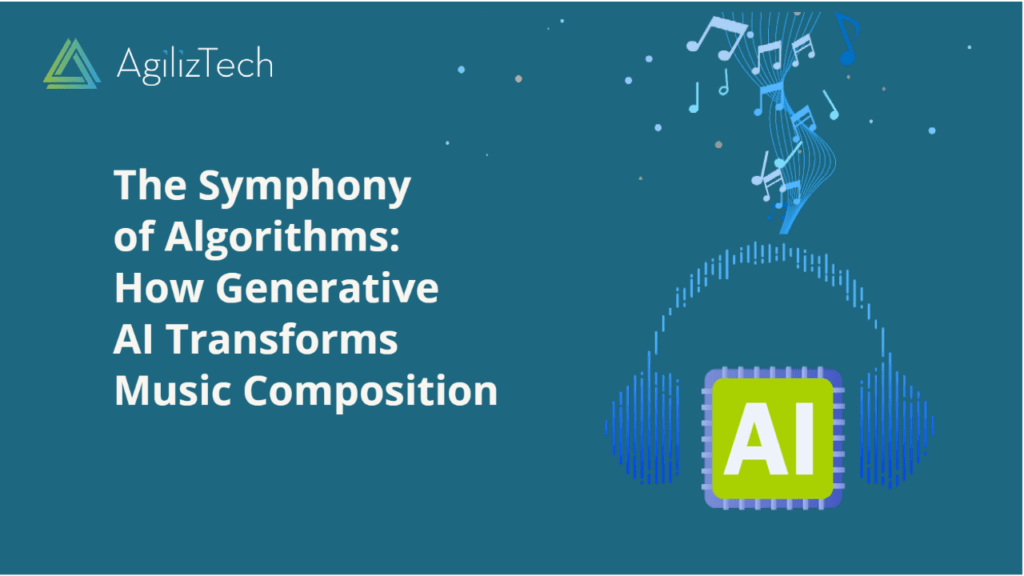
Generative AI in Music: The New Composer in Town
Generative AI in Music: The New Composer in Town
Overview
Generative AI in Music?
Music is one of the oldest and most universal forms of human expression. It can evoke emotions, convey messages, and create connections. But what if machines could also create music? What if artificial intelligence (AI) could learn from existing musical data and generate new compositions that sound like human-made music?
This is not a hypothetical question. Generative AI is a branch of AI that focuses on creating new content, such as images, text, or music, based on existing data. Generative AI can use different techniques, such as deep neural networks, to learn the patterns and rules of a given domain and produce novel outputs that follow those patterns and rules.
One of the domains where generative AI is making significant progress is music. Several examples of generative AI systems can compose music in various genres, styles, and moods, such as AIVA, Amper Music, Jukedeck, Magenta, and OpenAI Jukebox. These systems can either generate music from scratch or based on some input parameters, such as a melody, a chord progression, or a genre.
Benefits of Generative AI in Music
Some of the benefits are:
- It can enhance the creativity and productivity of human musicians by providing them with new ideas, inspiration, and feedback.
- It can democratize music creation by allowing anyone to compose music without requiring musical skills or expensive equipment.
- It can expand the diversity and variety of musical content by exploring new combinations and possibilities that humans may need help to think of or be able to achieve.
Challenges of Generative AI in Music
However, it also raises some challenges and questions, such as:
- How can we evaluate the quality and originality of generative music? Is it fair to compare it to human-made music or should it be judged by its standards?
- How can we ensure the ethical and legal use of generative music? Who owns the generated music’s rights and is responsible for its consequences?
- How can we preserve the human element and the cultural value of music? Does generative music diminish the role and identity of human musicians and composers?
Examples of Generative AI in Music
Here are some examples of generative music projects and platforms you can try out. For instance:
- AIVA is an AI composer that can create original music for various purposes, such as films, games, or commercials. You can choose from different genres, moods, and instruments and customize your soundtrack.
- Amper Music is an AI platform that can help you create professional-quality music in minutes. You can select your desired style, mood, length, and tempo, and Amper generates a unique composition.
- Jukedeck is an AI music maker that can produce royalty-free music for your videos, podcasts, or games. You can pick a genre, a mood, an energy level, and a duration, and Jukedeck creates a tailor-made track for you.
- Magenta is an open-source research project by Google that explores the role of machine learning in the creative process. You can use Magenta tools to generate music, drawings, or images or to interact with other artists and musicians.
- OpenAI Jukebox is a neural net that can generate music with coherent lyrics and vocals. You can give it a genre, an artist, or a lyric snippet as input, and it creates a song for you.
Conclusion
Generative AI in music is a rapidly developing field with the potential to revolutionize the way music is created and consumed. While there are still some challenges to be addressed, such as evaluating the quality and originality of generative music and ensuring its ethical and legal use, the potential benefits of generative AI in music are significant.
As it continues to develop, it is likely to have a major impact on the music industry. It could lead to new forms of music, new ways of listening to music, and new ways of interacting with music. It is also possible that generative AI could lead to the creation of new musical genres and subgenres.
The future is still uncertain, but the potential is vast. It is an exciting area of research with the potential to change the way we think about and experience music. The possibilities are endless, and it will be interesting to see how it develops in the years to come.

